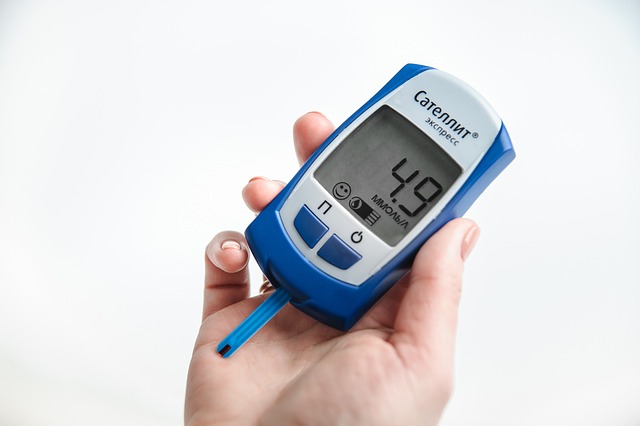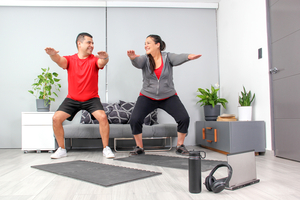A flurry of thoughts is likely to rush through your head if you find out that you are prediabetic. Almost sure to be among them is, “Can I prevent diabetes?” For most people, the answer is a resounding, “Yes!”
- You are not doomed to develop type 2 diabetes just because your grandmother had it.
- Seemingly small efforts can add up to significant risk in diabetes risk.
- The sooner you start changing your lifestyle, the more likely you are to prevent diabetes.
Preventing or delaying type 2 diabetes is a worthwhile endeavor. It can keep you from needing to check your blood sugar levels multiple times a day and take insulin or other diabetes medications. It also keeps you from having a high risk of diabetes complications, such as kidney disease or neuropathy.
You are right to be concerned about diabetes, since as many as 70 to 90% of people with prediabetes progress to type 2 diabetes within a few years of their diagnosis. However, you are just as right to wonder what you can do to lower your risk of diabetes. That is because 78 to 83% of all cases of diabetes are preventable. [2]
Diabetes Prevention Is Within Reach
The experts know a lot about diabetes prevention if you have prediabetes. There is a lot of good news. For example, you can lower your risk by making small changes in your daily lifestyle choices. Most patients who hit their lifestyle change goals can prevent diabetes without blood sugar medications. You may even be able to reverse prediabetes and achieve normal blood glucose or glycated hemoglobin (A1C) levels.
A lot of what we know comes from the results of a famous clinical trial among over 3,000 prediabetic patients.[3] Each patient was randomly assigned to be in a control group, to take the blood glucose-lowering medication metformin, or to participate in a lifestyle intervention program focusing on weight loss and increasing physical activity. Patients who were assigned to the lifestyle program had a stunning 58% lower risk of developing type 2 diabetes compared to the control group!
The study shows that prevention can happen, and not just for a select few. It can happen to you, but probably only if you take charge.
Now…How Can You Prevent Diabetes If You Are Prediabetic?
So…what exactly can you do? These are the cornerstones of a lifestyle to prevent diabetes.
- Lose weight.
- Get active.
- Sit less.
- Eat better.
- Be good to yourself.
- Work with your doctor.
You can take these six steps to lowering your blood sugar with small changes to your regular routines.
1. Lose weight.

Do you know what is great about weight loss? A little bit goes a long way if you are overweight! You can lower your risk for diabetes by as much as 16% for every 2.2 lb. (1 kg.) that you lose. If you are ready to aim for more, know that your risk can drop by over 50% if you can hit a 5 to 7% weight loss, which is about 9 to 13 lb. if you currently weigh 180 lb.
Now, how can you lose weight? “Sensibly.” Try these “dos” and “don’ts” of weight loss to cut calories without feeling deprived or overwhelmed!
2. Get active.

As with weight loss, getting active works. Physical activity can increase insulin sensitivity, lower blood sugar levels, and reduce your risk of developing type 2 diabetes. All of that is in addition to helping with weight loss.
A good goal is 150 minutes of moderate-intensity exercise per week. That works out to 30 minutes, 5 days a week. You can do it all at once or sneak it in 5 minutes at a time. It is up to you!
What is also up to you is which exercises you do. Find one or more activities that you love. It can help to ask yourself what your fitness personality or mood is, and then think of which possible activities match up. For example, if you…
- Need to talk: Grab a buddy and walk briskly or hike outdoors go to the gym together as you chat throughout your workout.
- Want alone time: Walk outdoors or on the treadmill, swim, or use a cardio machine at the gym as you space out, read, catch up on TV, or listen to music.
- Like the outdoors: Hike, walk at a park or the beach, go rock climbing, or kayak.
- Like predictability: Hit the gym where there is no weather and you can use your favorite equipment every day.
- Need direction: Take group fitness classes or hire a personal trainer to tell you what to do.
- Need a goal: Join a sports league, sign up for a 5k run or walk, or plan a vacation with a fitness challenge that you need to train for.
Be sure to get your doctor’s approval before starting any new activity or exercise program, and consider using a health coaching app to help you set goals and track progress.
3. Sit less.

You are doing well if you are breaking a sweat most days as you exercise, but there is something else you should be breaking. You should break up your sitting, or sedentary, time because it can be as harmful as skipping your exercise. Prolonged sitting, which many people do at their desks at work or on the couch at home, raises your insulin resistance and increases your risk for diabetes.
- Aim to stay still for no more than 30 minutes at a time.
- As little as 1 to 5 minutes of light activity can improve glycemic control.
- Any activity helps: light walking, squats, marching in place, arm swings, and lunges all work.
- Set a timer to remind you to get moving after sitting for 30 consecutive minutes.
You can use an app to remind you to get moving if you have been sitting for too long.
4. Eat better.

Calories and weight aside, some foods can lower blood sugar while others can raise it. In general, look for high-fiber foods, healthy (especially monounsaturated and omega-3) fats, and lean proteins, while limiting sugar, refined starches, and unhealthy (especially trans and saturated) fats.
You can often find healthier swaps that are simple and tasty.
The list of possible swaps is long, and you do not have to try them all. Just choose one or two at a time to see if they work for you.
5. Be good to yourself.

What do you advise your loved ones, such as children, your spouse, or friends? You probably want them to treat themselves right. Do you treat yourself with the same compassion you want for the people you care about?
At some level, you know innately that treating yourself well is healthy. Research backs up your intuition and specifically points to the benefits for blood sugar. Why not lower your diabetes while enjoying life a little more?
- Get a massage.
- Get enough sleep on a regular basis.
- Go out with friends.
- Watch a funny movie.
- Journal, meditate, or take bubble baths to dissipate stress.
Anything you can do to feel more rested and manage stress better can improve your hormone balance and lower blood sugar.
6. Work with your doctor.

You can do a lot of your diabetes prevention on your own, but your doctor and care team can help.
- Ask your doctor what resources are available. You may be able to join a local walking group or attend a nutrition class.
- Get your A1C tested at least every 6 months. The upcoming test will hold you accountable to your lifestyle change program. The tests will let you know how your prediabetes management is going and whether your blood sugar levels are dropping.
- Ask about medications. Most prediabetics do not need medications, but some do better with metformin to help lower blood sugar.
I Need Help!
No kidding!
Remember that clinical trial with the lifestyle intervention program that slashed diabetes risk by over half? What if you were able to join a program like that, and what if it were available for free?
You may qualify to join an officially-recognized Diabetes Prevention Program (DPP) based on the same goals and lessons that were in the original trial. Better yet, the program you join could be available on a smartphone app that you can access anytime, anywhere. You can be one more person to prove that YES, you can prevent diabetes if you are prediabetic!











.webp)






